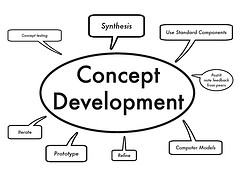Actions have consequences—mostly unintended.
One of my clients in Texas acquires houses out of foreclosure, rehabs and rents the properties, then sells the properties to investors.
Yep, they “flip” houses—one of the emerging business models in this new economy. The secret sauce in this business is in acquisition and resale, not in the rehab.
 This company acquires houses through county foreclosure auctions, which are an amazing example of the unintended consequences of government regulation.
This company acquires houses through county foreclosure auctions, which are an amazing example of the unintended consequences of government regulation.
At every step in the foreclosure and auction process, the government regulations are clearly designed to protect an abstract concept of fairness. As a result, the process inflicts the maximum financial damage possible on the unfortunate homeowner, who is already losing a house.
Foreclosure processes are controlled at the state and county level, so we’ll use Texas as the example, although many other states are even more peculiar.
Big problems often start small, then grow.
To give some perspective, each month Harris County (Houston), Texas has around 4,500 bank foreclosures and 500 county tax foreclosures. This is about ten times more than 18 months ago. That’s growth on the scale of the internet—or health care.
After a hundred years, things may change…
Texas foreclosure laws, mostly written in the past 50-100 years, require that all foreclosure auctions must be conducted on the first Tuesday of every month, on the county courthouse steps, in an “open outcry” auction. Rain, shine, or holidays, eager bidders convene on the courthouse steps every first Tuesday to search for bargains.
But this is not just one auction. Harris County has eight precincts, each with several constables, and each constable conducts his own tax auction. To add to the confusion, trustees, who hold the property title for the foreclosing banks, also must conduct their auctions, at the same time, and on the same courthouse steps.
So, on the first Tuesday a property investor will find ten to fifteen constables and thirty to fifty trustees all auctioning off foreclosed property in open outcry, at the same time. It’s more like a flea market than an auction.
Texas law specifies the method of notification. Foreclosure notices must be posted on the courthouse wall by the 18th of the month preceeding the auction. An investor has only two weeks to review 5,000 properties, estimated a market price, and make a personal inspection.
Texas law also specifies the method of payment – cash or cashier’s check – and the bidder qualifications. A bidder can bid only for himself. Stand-ins are not allowed. So an investor may find 10-20 properties of interest, only to discover that they are being auctioned by different people, in different places around the courthouse, at the same time.
Constables and trustees do not identify the property by its street address, but use a tax ID number – a string of 14 digits, with no alpha characters or other breaks, so there’s yet another challenge for the potential investor in identifying his selected property, attempting to listen to a soft-spoken constable amidst many other auctions.
Government regulations tilt the playing fields.
Finally, Texas law specifies the remedies for a buyer at the auction who may make a mistake. There are none. Once the bidding is done, the county cashes the cashier’s checks and the investor owns the property.
No possibility to recover from any mistake. It’s a huge opportunity for investors with lots of cash, lots of time to do the homework, and with nerves of steel. As a result, bid prices are very, very low.
It looks almost as if the state of Texas designed a process to minimize the bids on foreclosed properties at auction. While each of these regulations made some sense at the time, they look very dated now and one significant unintended consequence is to destroy any homeowner equity remaining in the foreclosed property. Another major unintended consequence is to shift the advantage heavily to full-time investors with lots of cash—the “fat cats” who have the time and knowledge to game the system.
It’s easy to poke fun at the process; but that’s not to the point. If we investigated government-run insurance, government-run construction projects, or any other government operation, we would find exactly the same situation.
Regulations create exceptions and processes that experts can exploit.
More regulations create more exceptions, more experts, and more gains.
Is there any solution for the unintended, unfair consequences of government regulation?
Next week we will explore goals, judgment, and transparency. Can these play a role in reducing unintended consequences? What are their unintended consequences?

 Have you ever wondered why bias is so deeply ingrained and prevalent?
Have you ever wondered why bias is so deeply ingrained and prevalent?




 Yesterday we talked about open communications and how powerful it is when part of cultural DNA.
Yesterday we talked about open communications and how powerful it is when part of cultural DNA.
 This company acquires houses through county foreclosure auctions, which are an amazing example of the unintended consequences of government regulation.
This company acquires houses through county foreclosure auctions, which are an amazing example of the unintended consequences of government regulation.

